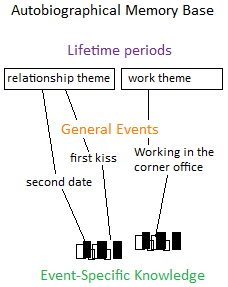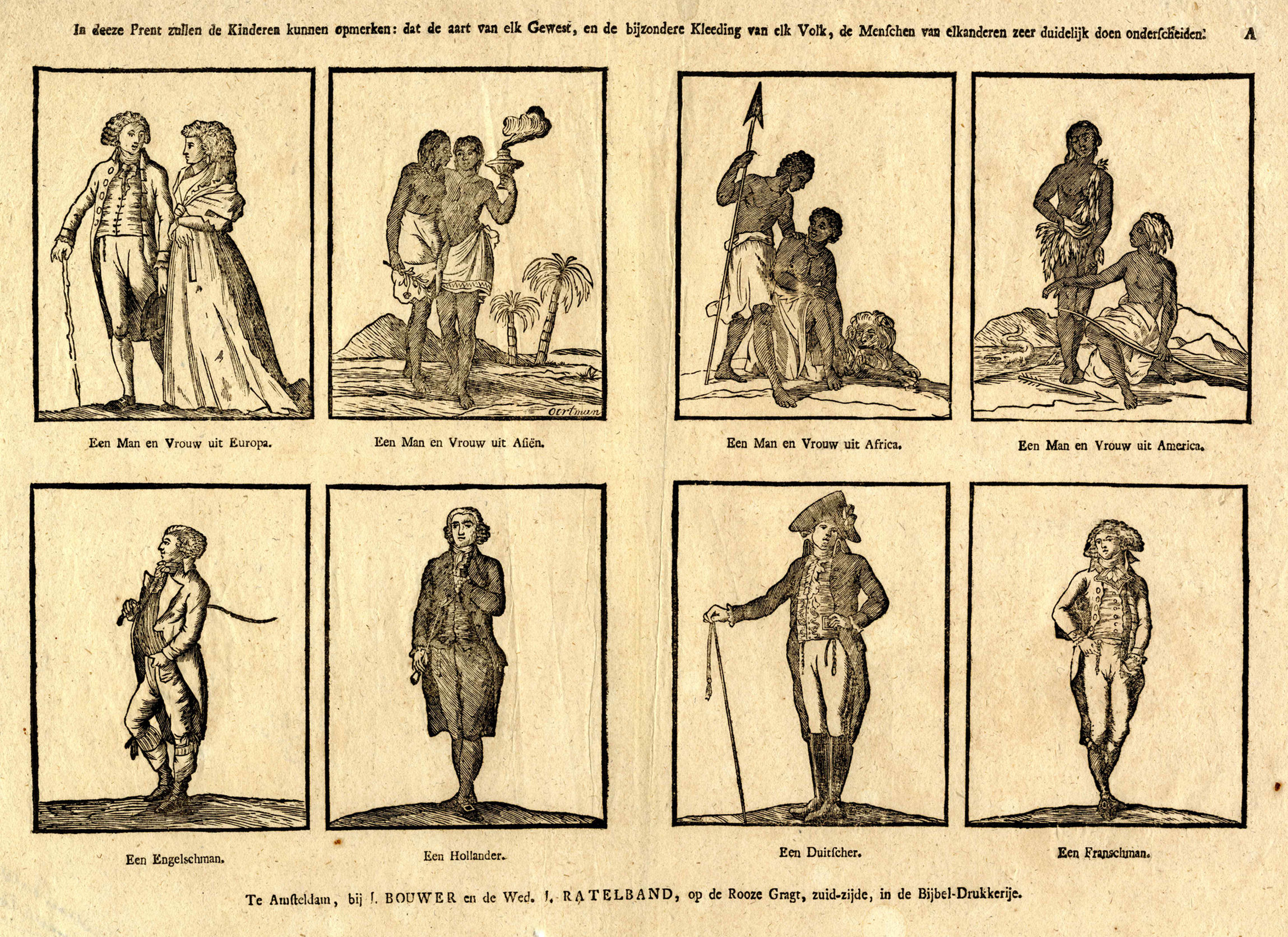|
Choice-supportive Bias
Choice-supportive bias or post-purchase rationalization is the tendency to retroactively ascribe positive attributes to an option one has selected and/or to demote the forgone options. It is part of cognitive science, and is a distinct cognitive bias that occurs once a decision is made. For example, if a person chooses option A instead of option B, they are likely to ignore or downplay the faults of option A while amplifying or ascribing new negative faults to option B. Conversely, they are also likely to notice and amplify the advantages of option A and not notice or de-emphasize those of option B. What is remembered about a decision can be as important as the decision itself, especially in determining how much regret or satisfaction one experiences. Research indicates that the process of making and remembering choices yields memories that tend to be distorted in predictable ways. In cognitive science, one predictable way that memories of choice options are distorted is that posit ... [...More Info...] [...Related Items...] OR: [Wikipedia] [Google] [Baidu] |
Cognitive Science
Cognitive science is the interdisciplinary, scientific study of the mind and its processes. It examines the nature, the tasks, and the functions of cognition (in a broad sense). Mental faculties of concern to cognitive scientists include perception, memory, attention, reasoning, language, and emotion. To understand these faculties, cognitive scientists borrow from fields such as psychology, economics, artificial intelligence, neuroscience, linguistics, and anthropology.Thagard, PaulCognitive Science, ''The Stanford Encyclopedia of Philosophy'' (Fall 2008 Edition), Edward N. Zalta (ed.). The typical analysis of cognitive science spans many levels of organization, from learning and decision-making to logic and planning; from neuron, neural circuitry to modular brain organization. One of the fundamental concepts of cognitive science is that "thinking can best be understood in terms of representational structures in the mind and computational procedures that operate on those structur ... [...More Info...] [...Related Items...] OR: [Wikipedia] [Google] [Baidu] |
FMRI
Functional magnetic resonance imaging or functional MRI (fMRI) measures brain activity by detecting changes associated with blood flow. This technique relies on the fact that cerebral blood flow and neuronal activation are coupled. When an area of the brain is in use, blood flow to that region also increases. The primary form of fMRI uses the blood-oxygen-level dependent (BOLD) contrast, discovered by Seiji Ogawa in 1990. This is a type of specialized brain and body scan used to map neural activity in the brain or spinal cord of humans or other animals by imaging the change in blood flow ( hemodynamic response) related to energy use by brain cells. Since the early 1990s, fMRI has come to dominate brain mapping research because it does not involve the use of injections, surgery, the ingestion of substances, or exposure to ionizing radiation. This measure is frequently corrupted by noise from various sources; hence, statistical procedures are used to extract the underlying signa ... [...More Info...] [...Related Items...] OR: [Wikipedia] [Google] [Baidu] |
Errors Of Commission
An error (from the Latin , meaning 'to wander'Oxford English Dictionary, s.v. “error (n.), Etymology,” September 2023, .) is an inaccurate or incorrect action, thought, or judgement. In statistics, "error" refers to the difference between the value which has been computed and the correct value. An error could result in failure or in a deviation from the intended performance or behavior. Human behavior One reference differentiates between "error" and "mistake" as follows: In human behavior the norms or expectations for behavior or its consequences can be derived from the intention of the actor or from the expectations of other individuals or from a social grouping or from social norms. (See deviance.) Gaffes and faux pas can be labels for certain instances of this kind of error. More serious departures from social norms carry labels such as misbehavior and labels from the legal system, such as misdemeanor and crime. Departures from norms connected to religion can have oth ... [...More Info...] [...Related Items...] OR: [Wikipedia] [Google] [Baidu] |
Autobiographical Memory
Autobiographical memory (AM) is a memory system consisting of episodes recollected from an individual's life, based on a combination of Episodic memory, episodic (personal experiences and specific objects, people and events experienced at particular time and place) and Semantic memory, semantic (general knowledge and facts about the world) memory. It is thus a type of explicit memory. Formation Conway and Pleydell-Pearce (2000) proposed that autobiographical memory is constructed within a self-memory system (SMS), a conceptual model composed of an autobiographical knowledge base and the working self. Autobiographical knowledge base The autobiography, autobiographical knowledge base contains knowledge of the self, used to provide information on what the self is, what the self was, and what the self can be. This information is categorized into three broad areas: lifetime periods, general events, and event-specific knowledge. ''Lifetime periods'' are composed of general knowledge a ... [...More Info...] [...Related Items...] OR: [Wikipedia] [Google] [Baidu] |
Episodic Memory
Episodic memory is the memory of everyday events (such as times, location geography, associated emotions, and other contextual information) that can be explicitly stated or conjured. It is the collection of past personal experiences that occurred at particular times and places; for example, the party on one's 7th birthday. Along with semantic memory, it comprises the category of explicit memory, one of the two major divisions of long-term memory (the other being implicit memory). The term "episodic memory" was coined by Endel Tulving in 1972, referring to the distinction between knowing and remembering: ''knowing'' is factual recollection (semantic) whereas ''remembering'' is a feeling that is located in the past (episodic). One of the main components of episodic memory is the process of recollection, which elicits the retrieval of contextual information pertaining to a specific event or experience that has occurred. Tulving seminally defined three key properties of episodi ... [...More Info...] [...Related Items...] OR: [Wikipedia] [Google] [Baidu] |
Verbatim
Verbatim means word for word. It may refer to: * ''Verbatim'' (album), a 1996 album by Bob Ostertag * "Verbatim" (song), a 2015 song by Blackbear * Verbatim (brand), a brand of storage media and flash memory * Verbatim (horse) Verbatim (1965-1991) was an American thoroughbred racehorse and sire. Background Verbatim was a dark bay or brown bred horse in Kentucky at Elmendorf Farm. He was sired by Speak John, the 1985 Champion broodmare sire in North America. Hi ..., an American racehorse * ''Verbatim'' (magazine), edited by Erin McKean * Verbatim theatre, a form of documentary theatre {{disambig ... [...More Info...] [...Related Items...] OR: [Wikipedia] [Google] [Baidu] |
Stereotypes
In social psychology, a stereotype is a generalization, generalized belief about a particular category of people. It is an expectation that people might have about every person of a particular group. The type of expectation can vary; it can be, for example, an expectation about the group's personality, preferences, appearance or ability. Stereotypes make information processing easier by allowing the perceiver to rely on previously stored knowledge in place of incoming information. Stereotypes are often faulty generalization, faulty, inaccurate, and Belief perseverance, resistant to new information. Although stereotypes generally have negative implications, they aren't necessarily negative. They may be positive, neutral, or negative. They can be broken down into two categories: explicit stereotypes, which are conscious, and implicit stereotypes, which are subconscious. Explicit stereotypes An explicit stereotype is a belief about a group that a person is consciously aware of a ... [...More Info...] [...Related Items...] OR: [Wikipedia] [Google] [Baidu] |
Familiar
In European folklore of the medieval and early modern periods, familiars (strictly familiar spirits, as "familiar" also meant just "close friend" or companion, and may be seen in the scientific name for dog, ''Canis familiaris'') were believed to be supernatural entities, interdimensional beings, or spiritual guardians that would protect or assist witches and cunning folk in their practice of magic, divination, and spiritual insight. According to records of the time, those alleging to have had contact with familiar spirits reported that they could manifest as numerous forms, usually as an animal, but sometimes as a human or humanoid figure, and were described as "clearly defined, three-dimensional... forms, vivid with colour and animated with movement and sound", as opposed to descriptions of ghosts with their "smoky, undefined form . When they served witches, they were often thought to be malevolent, but when working for cunning folk, they were often considered benevolent (a ... [...More Info...] [...Related Items...] OR: [Wikipedia] [Google] [Baidu] |
Positivity Effect
The positivity effect is the ability to constructively analyze a situation where the desired results are not achieved, but still obtain positive feedback that assists one's future progression. Empirical research findings suggest that the positivity effect can be influenced by internal positive speech, where engaging in constructive self-dialogue can significantly improve one’s ability to perceive and react to challenging situations more optimistically. The findings of a study show that the optimism bias in future-oriented thinking fulfils a self-improvement purpose while also suggesting this bias probably reflects a common underpinning motivational process across various future-thinking domains, either episodic or semantic. In attribution The positivity effect as an attribution phenomenon relates to the habits and characteristics of people when evaluating the causes of their behaviors. To positively attribute is to be open to attributing a person’s inherent disposition ... [...More Info...] [...Related Items...] OR: [Wikipedia] [Google] [Baidu] |
Questionnaire
A questionnaire is a research instrument that consists of a set of questions (or other types of prompts) for the purpose of gathering information from respondents through survey or statistical study. A research questionnaire is typically a mix of close-ended questions and open-ended questions. Open-ended, long-term questions offer the respondent the ability to elaborate on their thoughts. The Research questionnaire was developed by the Statistical Society of London in 1838. Although questionnaires are often designed for statistical analysis of the responses, this is not always the case. Questionnaires have advantages over some other types of survey tools in that they are cheap, do not require as much effort from the questioner as verbal or telephone surveys, and often have standardized answers that make it simple to compile data. However, such standardized answers may frustrate users as the possible answers may not accurately represent their desired responses. Questionnaires ar ... [...More Info...] [...Related Items...] OR: [Wikipedia] [Google] [Baidu] |
Emotional
Emotions are physical and mental states brought on by neurophysiology, neurophysiological changes, variously associated with thoughts, feelings, behavior, behavioral responses, and a degree of pleasure or suffering, displeasure. There is no scientific consensus on a definition. Emotions are often reciprocal determinism, intertwined with mood (psychology), mood, temperament, personality psychology, personality, disposition, or creativity. Research on emotion has increased over the past two decades, with many fields contributing, including psychology, medicine, history, sociology of emotions, computer science and philosophy. The numerous attempts to explain the origin, functional accounts of emotion, function, and other aspects of emotions have fostered intense research on this topic. Theorizing about the evolutionary origin and possible purpose of emotion dates back to Charles Darwin. Current areas of research include the neuroscience of emotion, using tools like positron ... [...More Info...] [...Related Items...] OR: [Wikipedia] [Google] [Baidu] |
Neuropathy
Peripheral neuropathy, often shortened to neuropathy, refers to damage or disease affecting the nerves. Damage to nerves may impair sensation, movement, gland function, and/or organ function depending on which nerve fibers are affected. Neuropathies affecting motor, sensory, or autonomic nerve fibers result in different symptoms. More than one type of fiber may be affected simultaneously. Peripheral neuropathy may be acute (with sudden onset, rapid progress) or chronic (symptoms begin subtly and progress slowly), and may be reversible or permanent. Common causes include systemic diseases (such as diabetes or leprosy), hyperglycemia-induced glycation, vitamin deficiency, medication (e.g., chemotherapy, or commonly prescribed antibiotics including metronidazole and the fluoroquinolone class of antibiotics (such as ciprofloxacin, levofloxacin, moxifloxacin)), traumatic injury, ischemia, radiation therapy, excessive alcohol consumption, immune system disease, celiac dis ... [...More Info...] [...Related Items...] OR: [Wikipedia] [Google] [Baidu] |





